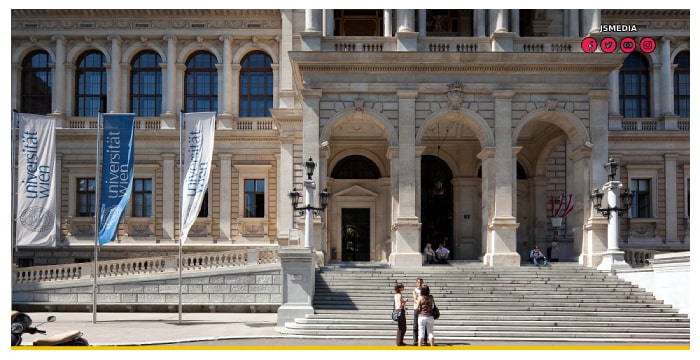JSMedia – The University of Vienna is a public research university in Vienna, Austria. It is one of the oldest in the German-speaking world. Established in 1365 by Duke Rudolph IV, the University of Wien is one of the largest and oldest universities in the German-speaking world. Today, the University is home to over 18,000 students from 86 countries. Founded by the emperor Maximilian I, the University of Vienna offers courses in all areas of science and the arts.
The University of Vienna is home to one of the largest and most diverse faculties in the world. Its academic offerings include philosophy, history, philological studies, education, sports sciences, and translation studies. The University of Vienna offers a wide range of study programmes to meet the needs of students. It is ranked second only to the University of Berlin, which is why it is considered the best university in Austria. It is a highly ranked institution for graduate and postgraduate education in Austria.
The University of Vienna is a large, modern institution dedicated to research-led teaching and quality-oriented research. It was founded in 1365, making it the oldest university in the German-speaking world. It is also the largest university in Central Europe. Despite the university’s size, it is still the largest in Central Europe. The goal of the University of Vienna is to produce high-quality research that is both fundamental and applied. The university’s approach to research-led teaching is unique in that it considers teaching as one entity rather than separate.
University of Vienna Offers Online Scholarships for International Students

Founded in 1365, the University of Vienna is the second oldest German-speaking uni in the world after Prague. Though the University of Vienna does not offer specialist subjects, it still has a reputation for excellence. The University of the Holy See has approximately 63,000 students, making it one of the largest in Europe. Its faculty is composed of nearly 300 professors and over 300 departments. Its alumni represent more than half of the world’s population.
The University of Vienna has numerous academic departments. The university’s website has extensive information on the cost of living in Vienna. It is recommended that students get their own health insurance while studying at the University. If you’re an international student, you should have the appropriate insurance to cover your medical costs in Austria. The University of Victoria’s webpage also provides helpful information on the cost of health insurance in Austria. You should also take into account the cost of living in Austria when you’re applying for an exchange program.
The University of Vienna was established in 1836 and was reformed by the Habsburgs in the late 18th century. Its location is an attractive area in the city and attracts many visitors each year. Its campus is also home to a vibrant Jewish community. If you are looking for an educational institution, this is a great place to begin your search. The history of the university can help you choose a PhD program.
The University of Vienna has a number of academic departments. The university also has the Vienna Observatory and Institute for University Sports. These facilities are used by all types of students. The Austrian Study Grant Authority is located in Vienna. In addition to the main campus, the University of the capital of Austria maintains facilities in the provinces. The main campus is located in the city, but there are also several other departments in the area. It is a great place to study and live!
Founded in 1383, the University of Vienna is the oldest university in the German-speaking world. With more than 9,000 students in 1970, it was one of the largest academic institutions in Europe. In the 16th century, the University of the United States was the first to recognize the value of the University of Vienna. The name “Vienna” has a Latin meaning in the city. It is the city of the university, and was a common name for the university.
Historically, the Vienna was a Papal institution. The first Siege of the city in 1518 shook the university, which had only 30 students. After the first Siege of the city by the Ottomans, King Ferdinand IV began to tie the school closer to the church and installed the Jesuit Order in 1551. In 1623, the Emperor enacted the Sanctio Pragmatica edict. The Jesuits took over the teaching of the theological and philosophical faculties, making the University a stronghold for Catholicism for over 150 years.
